- Joined
- Oct 9, 2007
- Messages
- 47,395 (7.52/day)
- Location
- Hyderabad, India
| System Name | RBMK-1000 |
|---|---|
| Processor | AMD Ryzen 7 5700G |
| Motherboard | ASUS ROG Strix B450-E Gaming |
| Cooling | DeepCool Gammax L240 V2 |
| Memory | 2x 8GB G.Skill Sniper X |
| Video Card(s) | Palit GeForce RTX 2080 SUPER GameRock |
| Storage | Western Digital Black NVMe 512GB |
| Display(s) | BenQ 1440p 60 Hz 27-inch |
| Case | Corsair Carbide 100R |
| Audio Device(s) | ASUS SupremeFX S1220A |
| Power Supply | Cooler Master MWE Gold 650W |
| Mouse | ASUS ROG Strix Impact |
| Keyboard | Gamdias Hermes E2 |
| Software | Windows 11 Pro |
Gainward, a subsidiary of Palit Microsystems presented a set of pictures of its non-reference HD 4870. It will share this design with the Palit Radeon HD 4870 Sonic. Gainward sought aggressive cooling and overclocking for this card. The card will continue to feature 512 MB of GDDR5 memory. This card features dual-BIOS, a BIOS maintains 750 MHz / 950 MHz core and memory parameters, while a second high-performance BIOS ups these frequencies to 775 MHz / 1000MHz. Presumably this mechanism brings about redundancy with the BIOS, a boon for overclockers as accidental damage to the card due to tweaking the BIOS could be easily resolved.
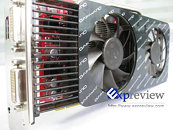
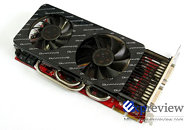
As you can see from the first picture, the card features a DisplayPort on the card apart from two DVI connectors, there is no air-outlet on the bracket-plate. The second picture shows the cooler, it features two fans of dissimilar sizes. An 80 mm fan blows air over the GPU / memory area while a smaller 70 mm fan blows air directly over the VRM area. Under the hood of this cooler is the cooler which consists of a GPU-block from which three aluminum heatpipes project. These pipes convey heat through the fins on which the fans blow air.
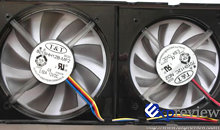
On to the electronics of this card, you can see a non-reference PCB, the two 6-pin PCI-E power inputs are angled and pushed on to the side (a-là Radeon HD 2900 XT) unlike the reference PCB. The PCB fuels the card with 4 phases for the GPU and 2 phases for the memory. Speaking of memory, the card uses GDDR5 chips made by Qimonda.
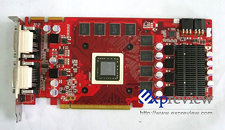
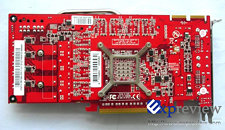
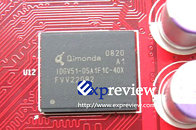
View at TechPowerUp Main Site


As you can see from the first picture, the card features a DisplayPort on the card apart from two DVI connectors, there is no air-outlet on the bracket-plate. The second picture shows the cooler, it features two fans of dissimilar sizes. An 80 mm fan blows air over the GPU / memory area while a smaller 70 mm fan blows air directly over the VRM area. Under the hood of this cooler is the cooler which consists of a GPU-block from which three aluminum heatpipes project. These pipes convey heat through the fins on which the fans blow air.

On to the electronics of this card, you can see a non-reference PCB, the two 6-pin PCI-E power inputs are angled and pushed on to the side (a-là Radeon HD 2900 XT) unlike the reference PCB. The PCB fuels the card with 4 phases for the GPU and 2 phases for the memory. Speaking of memory, the card uses GDDR5 chips made by Qimonda.



View at TechPowerUp Main Site
Last edited:




 :
:



